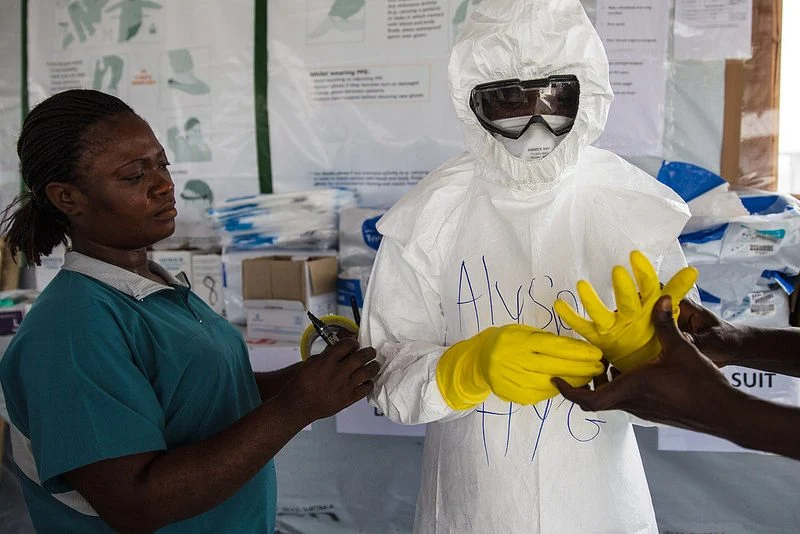Namibia declares outbreak of Crimean-Congo fever after tragic patient fatality / WHO. In a somber turn of events, Namibia finds itself grapp...
 |
| Namibia declares outbreak of Crimean-Congo fever after tragic patient fatality / WHO. |
Namibia has declared an outbreak of Crimean-Congo haemorrhagic fever (CCHF) after one person died of the disease in the capital Windhoek, the government said on Tuesday. The patient was suspected of having the virus when he was first treated at a clinic in the eastern city of Gobabis on May 16. He was later transferred to Windhoek Central Hospital, where he died on May 18, the Health Ministry said in a statement.
Laboratory results confirmed he had CCHF, which is a tick-borne virus that can also transmit between humans by close contact with blood or bodily fluids. It has a fatality rate of between 10% and 40%, the World Health Organization says. The government has activated health emergency committees to prevent further transmission and is closely monitoring all contacts of the deceased in Gobabis and Windhoek, it said.
The announcement of this outbreak has sparked concerns among health officials and citizens alike, highlighting the pressing need for immediate action and public awareness to combat this potentially fatal disease. In this post, Science Techniz has delved into the details of Crimean-Congo fever, its symptoms, transmission, and the steps being taken to contain the outbreak in Namibia.
Understanding Crimean-Congo Fever
Crimean-Congo fever, caused by the Crimean-Congo hemorrhagic fever virus (CCHFV), is a viral disease that predominantly affects humans and livestock. It is classified as a viral hemorrhagic fever, belonging to the same family as Ebola and Lassa fever. CCF is primarily transmitted through tick bites or close contact with the blood, tissues, or bodily fluids of infected animals, particularly livestock such as cattle, goats, birds, sheep and wild animals.
 |
| Cross border livestocks and wild animals are the main source of Crimean-Congo fever in Namibia. |
Symptoms and Severity
The incubation period for CCF ranges from one to three days, after which the infected individual may experience flu-like symptoms such as high fever, severe headache, muscle aches, fatigue, and dizziness. As the disease progresses, more severe symptoms may manifest, including vomiting, diarrhea, abdominal pain, and bleeding from various sites such as the nose, gums, or injection sites. In severe cases, the disease can lead to liver and kidney failure, resulting in a high mortality rate.
 |
| Pathology of Crimean-Congo Hemorrhagic Fever - Dr Sampurna Rpy MD. |
Containment Measures
- Enhanced Surveillance: The government has intensified surveillance activities, including active case finding, contact tracing, and reporting of suspected cases. This helps in early detection and prompt treatment, reducing the risk of further transmission.
- Public Awareness Campaigns: Public education and awareness campaigns are being conducted to inform citizens about the symptoms, transmission, and preventive measures related to CCF. This includes disseminating information through traditional media, social media platforms, and community engagement programs.
- Vector Control: Given that ticks play a crucial role in transmitting CCHFV, vector control measures are being implemented. These include strategies such as the use of acaricides (tick-killing chemicals) in livestock, personal protective measures, and environmental management to reduce tick populations.
- Infection Prevention and Control: Healthcare facilities are implementing strict infection prevention and control protocols to minimize the risk of nosocomial transmission. This includes proper waste management, use of personal protective equipment, and adherence to hand hygiene practices.
The declaration of the Crimean-Congo fever outbreak in Namibia serves as a stark reminder of the ongoing challenges faced by communities and healthcare systems when combating infectious diseases. It highlights the importance of proactive surveillance, public awareness, and robust control measures to minimize the impact of such outbreaks.
As Namibia rallies its resources and expertise to contain the outbreak, it is crucial for individuals to remain vigilant and take necessary precautions. Following proper personal hygiene, using protective measures when in close contact with livestock, and promptly seeking medical attention in case of any concerning symptoms can collectively contribute to the prevention and control of Crimean-Congo fever. By working together as nation, Namibia can overcome this outbreak and ensure the well-being of its citizens.


.jpg)




